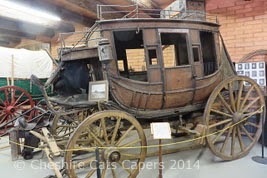We stayed in La Junta for a few days and while we were there we visited
a couple of interesting places.
Koshare Indian Museum
In 1933 a group of boy scouts
created an organisation to study Indian Culture, the lady in the museum told us
that the word Koshare means clown.
Koshare Dancers are members of Boy
Scout Troop 232 and Crew 230 of the Rocky Mountain Council, the dancers make
their own outfits and interpret songs and dances of American Indians taught to
them by Indian friends.
The dances take place in a specially
built giant Kiva, it’s beautifully made and has the largest self-supporting
roof of its kind in the USA it has over 600 logs and weighs nearly 40
tons. Unfortunately there were no
dances scheduled when we were in La Junta.
The dancers also take their show on the road.
Along with some of the dancer’s
costumes the museum has some very interesting artefacts.
Otero Museum
The museum is very well done, on our
visit two very helpful volunteers showed us around. The museum show cases the history of the
town and its inhabitants.
There is a replica of La Junta’s
1876 log cabin school house,
a stage coach
A replica of the inside an old ‘Mom and Pop’ store
La Junta has the oldest chartered
volunteer fire department in Colorado and the museum has two vintage fire
engines in its collection.
For a small town the museum is fabulous, we really enjoyed our visit.
Have fun, we are!














